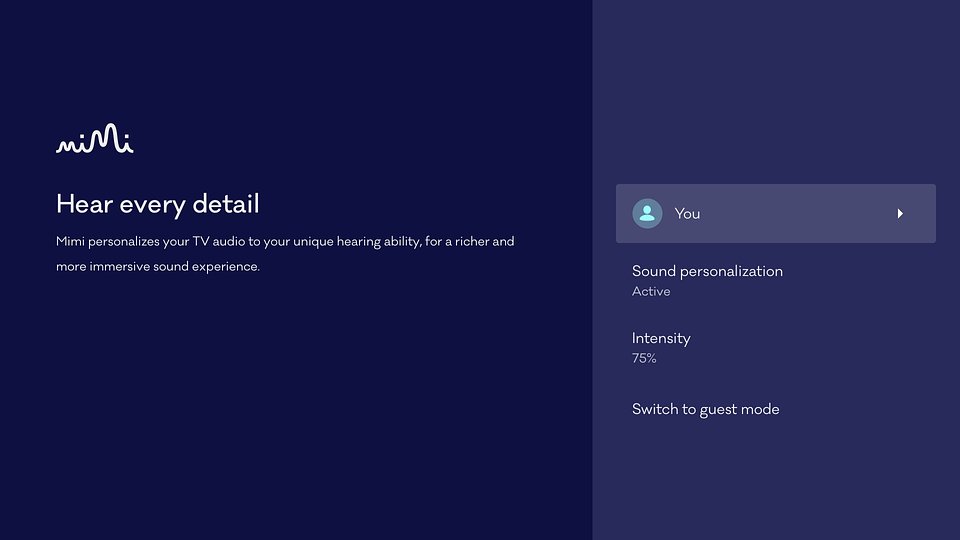New Philips TVs launching in the UK and Europe this year will include a new audio technology, one that helps users calibrate their TV sound system to their specific hearing needs.
The Mimi Sound Personalisation feature, announced to coincide with World Hearing Day (March 3), allows TV buyers to "personalise their TV audio to their unique hearing profile by taking a short hearing test" on "an iOS or Android handset or tablet." The test will create a "Hearing ID profile" you can sync to your television – meaning you won't have to fiddle in the sound settings to get audio output that actually works for you.
We're told that "hearing ability is primarily assessed in two area: the lowest intensity sound that they can detect and their ability to process ‘masked’ sounds i.e. the quietest sound they can perceive in the presence of masking sounds such as noise."
The feature will be available on "the majority" of 2021 Philips Android TVs, set to start releasing from early May. That should include both mid-spec LCDs and Ambilight sets as well as flagship OLED TVs coming this year – specifically the 8506, 9006, 9206, 9506, OLED706, OLED806, and OLED 856.
- Philips TV 2021: every new set coming this year
- What is the best TV out there?
- Best TVs for sound: built-in audio worth having
The sound of accessibility

The feature is ostensibly for the benefit of D/deaf or hard-of-hearing consumers, though does come at a time of extensive audio customisation across headphones, TVs, and the like.
Many flagship TVs these days use a 'ping' sensor to figure out the dimensions of the room around them, calibrating audio accordingly for the needs of the space; there are usually a host of sound settings for users to tweak too.
As gradual and incomplete as accessibility options in today's consumer devices often are, it's clear that some headway is being made.
Samsung, the world's largest TV maker, has made some of the biggest flexes in this area, announcing new features to help the sight and hearing impaired for its 2021 range. These features include the ability to move caption boxes and subtitles to different areas of the screen, as well as zoom in on sign language interpreters (usually kept in the corner of the screen).
True accessibility, of course, won't come until we can all control our TVs with our brains – but naturally Samsung is working on that too.
- Here are the best OLED TVs out there
No comments:
Post a Comment